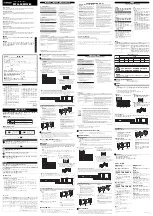
Page
10
of
10
X
C
3
7
5
4
S
o
ld
er
in
g
G
u
id
e
XC3754 Soldering Guide
The header pins fit on the PCB board with the short side of the plastic going through the
PCB holes, and the longer legs are on the same side as every other component.
Here, we’ll hold it from the left, and solder the right most connection, just to hold it in
place. Make sure that the alligator clip is not bending the component or putting it in an
awkward position; this too can take a bit of practise.
Once the rightmost connector is a good solid joint, you should find that the header pins
should not move too much. If you find that the header bends outwards (
away from the
PCB
) when you remove the clip, put it back in and touch up the joint again, this is an
example of stress on the component. Touching it up once or twice should do the job and
adjust the component so that it lays flat on the PCB.
Once the pins are held into position, adjust the alligator clip so you can solder all of
them, and work your way from right to left. Making sure they are all good connections.
Finishing up
Once the header pins are in, you have every component on the board. The legs of the
ICs are often too wide for the IC sockets, but you can very gently bend them into shape
so that the IC slides into the socket.
Make sure
that the ICs are facing the right way by
looking at the notches on the ICs. Some ICs might also have a dot on top corner of the
chip which indicates the same
thing.
Once everything is in place.
Attach to the power
connections header on your
Arduino and power it up, you
should see it come and
sparkle to life.
Merry Christmas!




























